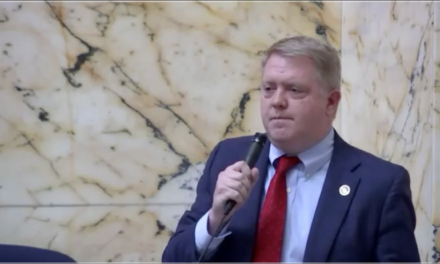By Len Lazarick
A key Democratic narrative this election year is that Maryland used to have the best public schools in the country, but Republican Gov. Larry Hogan has short changed them so much that they have now slipped to 5th place.
The problem with this partisan talking point is that the Education Week Quality County report card on which the claim is based has always been a dubious indicator of how good the schools were. The top grade was only a B and very little of the score when Maryland was #1 was based on student outcomes — how well they could actually read, compute and understand.
Weeks before Hogan took office in 2015, Maryland had already slipped to third place as Education Week began to give more weight to student outcomes.
Even if the complicated Quality Counts rating standards were not questionable, Maryland’s slipping ratings are based mostly on lagging data from test scores in O’Malley budget years. And except for Hogan’s first budget, where one optional school aid formula was only partially funded, the current governor has increased education aid every year — just as the law mandates him to do.
Kirwan commission
Brit Kirwan, the former university system chancellor who now chairs the Commission on Innovation and Excellence in Education, has been trying for the past 16 months to persuade both its members and anyone else who will listen that Maryland public schools are not as good as we think.
“Maryland is very much in the middle of the pack on these NAEP scores,” Kirwan said at a recent commission meeting, referring to the National Assessment of Educational Progress, the only standardized tests administered nationally in reading and math.
“People are quite frankly shocked when they see this.”
A key problem with the report card from Education Week, a Bethesda-based publication read mainly by administrators, is that only one sixth of the report card that first placed Maryland #1 was based on K-12 student achievement. The rest of the report card was based on inputs like school aid, demographics and curriculum.
What consultants have told the Kirwan commission – and was widely known by education experts when the “We are #1” buttons we’re being handed out – is that Maryland students consistently score behind students from Massachusetts and New Jersey, not to mention behind students in Shanghai and Singapore.
Kirwan also notes that despite its wealth, Maryland actually ranks 11th in per student expenditures and surprisingly overall spends 5% less on schools with students at-risk from poverty and poorly educated parents than it does on other students.
“Taken altogether, it is not a pretty picture for our state,” Kirwan said.
The “good work going on in Maryland is far from systemic.”
“We have a good system of education, we have a lot to be proud about, but we can and we must be better,” Kirwan said in September. “Good is not good enough in this day and age. …The state will need to invest significant money at the state level and from the local jurisdictions.”
Closing gaps, changing formulas
The Kirwan Commission was tasked with closing these achievement gaps and recommending new education funding formulas. It was supposed to make its final recommendations to the governor and legislature last month. But Kirwan determined in October that its report was taking shape too slowly, and it would not be able to finish till June.
The postponement avoids a major fight in this election year’s legislature over education aid and funding formulas that can put jurisdictions at odds with each other.
The commission is supposed to wrap up a preliminary report with an ambitious agenda Monday. Four smaller work groups of commissioners will meet during the legislative session to estimate the cost of the recommendations, and then come up with a final report and proposed funding formulas in June. At least that’s the plan.
Over the next decade, based on studies of best performing schools elsewhere, the commission envisions a major overhaul of public education in Maryland.
Universal pre-kindergarten
That overhaul includes making pre-kindergarten available everywhere in Maryland for all four- and five-year-olds. Some legislators had already proposed this in past sessions, and, after being told to study it, the commission has agreed it is worth doing. They haven’t figured out how much it will cost, who will pay for it, who will provide it and whether it will be free for all students.
In an interview last month, Anne Arundel County Executive Steve Schuh commented: “It’s going to be immensely expensive for our county and it’s also a very sad statement about the country that the government needs to take children away from their parents because the parents are so incompetent … the parents aren’t doing the job at home.”
Teacher pay hikes
As we reported here in December, the commission is also recommending big increases in teacher salaries along with the creation of statewide career ladder that would put teachers in line with other “high-status professions.” The commissioners hope this will increase the size and quality of the pool of people interested in teaching, which has recently shown a decline.
The pay hikes and career ladder leading to the position of master teacher would be based on teaching performance, not academic credentials and seniority. They are an attempt to bring Maryland in line with best practices in high-performing school systems in other countries, particularly Shanghai and Singapore.
The commission will also recommend teams of teachers be given greater autonomy and spend less time in the classroom and more time collaborating on teaching strategies and methods.
Another major recommendation will be reviving career and technical education at the high school level in partnership with the businesses that need the trained work force and the community colleges that are currently providing much of the certified training.
Big costs demand accountability
All these items and more will cost lots of money — billions more than is currently being spent, it has been estimated. Stephen Guthrie, Carroll County’s school superintendent and a commission member, pointed out “We cannot afford any of this.”
Chairman Kirwan is insisting that the commission create accountability standards and new, higher benchmarks for student success to justify the new money.
“In this era, simply asking for more money to continue with existing practices has little or no chance of success,” Kirwan told the commissioners. “We need a bold plan with a high degree of accountability. Anything less will relegate our report to the round file.”
Prospects are dim for actually paying for the policy changes without new taxes. A presentation by legislative budget analyst David Romans showed structural deficits recurring in a few years just based on existing programs for health and education. Because of existing health entitlements and education aid formulas, state spending is rising faster than state revenues.
“There doesn’t appear we have an easy way to fund new initiatives,” Romans said.
The only representative of business on the commission, Scott Dorsey, chairman and CEO of Merritt Properties, agreed that the salary jumps were “necessary” to retain teachers, but “we need to think of ways to be creative. It’s not just about the money, it’s about innovation.”
RELATED STORIES
Maryland schools get top grade for fourth year in a row, but still not #1 in student achievement
For the fourth year in a row, Maryland public schools have come out on top on the annual state-by-state report card published by Education Week magazine. Maryland earned its top place with an overall B+ grade, compared to a C average for the nation as whole.
Maryland schools slip to No. 3 in Education Week report card (Jan. 2015)
For the umpteenth time in his two terms as governor, on Wednesday Martin O’Malley again touted that Maryland’s public schools had been No. 1 in America for five years running from Education Week magazine. But Maryland’s schools slipped a notch in the Education Week report card released Thursday, tripping to third place behind Massachusetts and New Jersey.
Kirwan Commission won’t finish school funding recommendations this year
The commission charged with revising state school funding formulas will not be able to finish its work by its Dec. 31 deadline, commission chair Brit Kirwan told the panel Wednesday. “It will take more time to do our work completely and accurately,” said Kirwan, the former university system chancellor. The Commission on Innovation and Excellence in Education is trying to reach consensus on major changes on how the state and local governments should spend the largest single slice of state and local budgets.







So, more money needs to be spent ?
Here’s an idea… How about hiring teachers who can actually teach their subjects because they know them ?
How about hiring teachers who can look at the students in their classes and “individualize” the lessons taught ?
I have a friend who teaches martial arts to classes of 30 students… While everyone in his class may have the same color belt, they might not all be at the same level in skills, so he can pick that up and work with those who need the help and also be available to the others…
I remember the nuns ( in grade school with 20-30 students per class ) and teachers in public high school doing the same when I went to those schools from 1959-1971… And the curriculum in all of the classes were intellectually demanding since upon high school graduation, the graduates were to go to work, or directly to college, go to trade or vocational school, enter the service and go to trade school or college on the GI Bill.
It wasn’t that far ago that public schools did that with far fewer tax dollars…
Let’s get back to that instead of having all of the gimmicks, educational fads, and excuses…